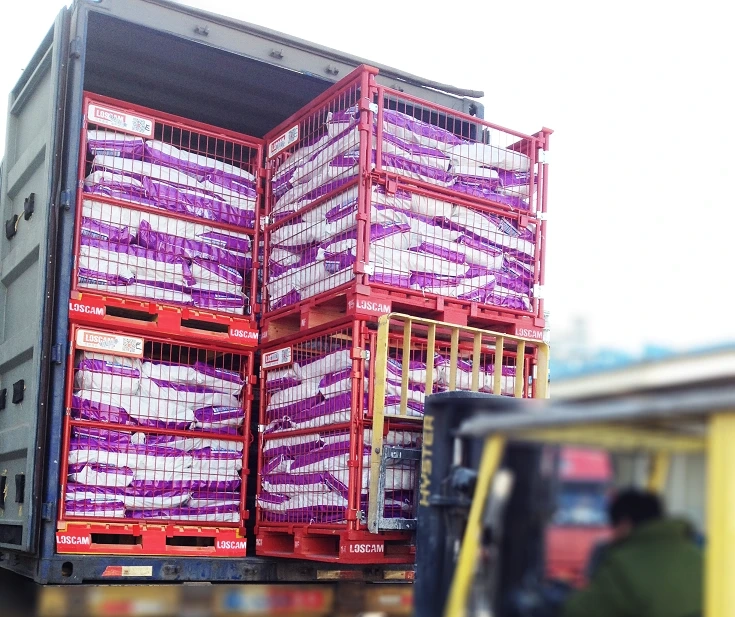Logistics is the cornerstone of any industry reliant on the efficient movement of goods. There is a continuous need to move things safely, eliminate waste, and optimise time spent driving them. Storage and transportation solutions have never been more essential. Companies seek solutions that are sturdy enough to carry heavy loads, maximise the use of available space, and save money. Steel stillage cages are one among many solutions to meet these needs, and they remain one of the best.
Why they excel
There are many storage solutions, but none can match the stability and longevity of a steel stillage cage. It is designed to bear heavy products, withstand rough handling, and resist wear from frequent use. In contrast to less robust containers, they keep their shape even under pressure. Their solid construction helps industries prevent product damage during loading, transportation, and unloading. This characteristic makes them more reliable for long-term use than lighter materials.
Effect on warehouse space utilisation
Each inch of space within the warehouse counts, and unused space equates to lost dollars. Steel stillage cages are stackable, which means warehouses can store more goods without increasing physical square footage. They introduce organisation into disorganised storage by establishing defined stacking schemes, making it easy for employees to manage items. With this, companies can declutter and optimise available space without acquiring new premises.
Saving handling time in operations
In logistics, money is always tied to time. Goods that can be loaded and unloaded more quickly make delivery timetables easier to maintain. Steel stillage cages are designed to simplify handling and storage. With their uniform design, forklifts and other equipment can lift them quickly and efficiently. Workers need less time to prepare, move, or repack products, which implies that they are less likely to encounter holdups. Speedier handling enhances productivity in the supply chain, enabling companies to remain more competitive in a busy market.
Adaptability across diverse industries
From vehicles and construction to agriculture and retail, stillage cages are versatile and come in handy for all types of organisations. They can accommodate a wide variety of products, making them convenient for business use. A good example of this could be transporting heavy equipment components, building equipment, or bulk agricultural products.
Reducing long-term expenses
Companies generally think about initial costs, but long-term savings are more important for logistics. Stillage cages do come with an initial fee. However, their durability indicates that they can last for years and require only minimal maintenance. They are not throwaway packaging and can be reused many, many times without losing their strength. This decreases the number of replacements and reduces overall expenses. In the long term, their storage capabilities are worth many times more than the original purchase price, making them an economical option for long-term business use.
The role of rentals
It is not practicable for all businesses to spend large amounts of money on storage devices at one time, particularly for small-sized companies or those with limited storage demands. This is where crates rental is a smart alternative. It enables organisations to utilise robust storage systems, such as steel cages, without incurring excessive costs through bulk purchasing. Renting provides a flexible and affordable environment, while still allowing companies to reap the benefits of these products. This way, they can respond to changing demands without overstressing their resources.
How stillage cages can reduce errors
Logistics errors, such as misplaced or destroyed products, can cause significant issues and costs for suppliers. A stillage cage helps reduce this risk by keeping items sorted and in order. Their design prevents mixing products and allows staff to identify items clearly. This reduces picking, packing, and dispatch errors. Greater accuracy means fewer complaints from customers, more streamlined operations, and greater faith in business reliability. Over the long term, error reduction also conserves costs associated with rework and returns.
Facilitating just-in-time supply chains
Most businesses operate on just-in-time delivery systems, and goods must arrive at the appropriate time. Any delay or error can halt the entire process. Stillage cages assist these systems because they enhance handling speed and reduce damage possibilities. The items can proceed straight from the warehouse to delivery without being subjected to unnecessary repacking. This helps keep operations lean, with no excess stocks being maintained, yet the demand is still met.
In conclusion, steel stillage cages have revolutionised the storage, handling, and transportation of goods in logistics. Their strength, safety, and flexibility make them ideal for those sectors that want to cut costs and maximise efficiency. Direct investment or flexible options, such as crate rental, can create a business that enjoys long-term gains through these arrangements. The application of a stillage cage is not merely storage, but rather transforming logistics into a quicker, safer, and greener process. With industries expanding, these cages will continue to play an essential role in dictating transport efficiency around the globe.


